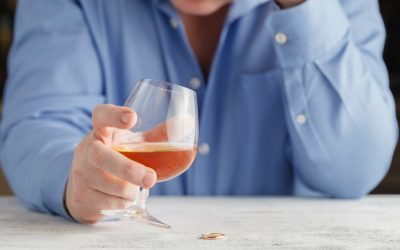Many researchers and health care professionals believe that the opioid epidemic is mostly a consequence of “supply side” abundance, resulting from aggressive marketing by the pharmaceutical industry as well as physicians who have over-prescribed. A recent public opinion poll identified physicians as being responsible for the crisis (28). Given the link between prescription opioid use and later onset of heroin http://mebelshopufa.ru/en/perekrytie/chto-teplee-gazoblok-ili-kirpich-doma-iz-kirpicha-ili.html abuse, an obvious public health strategy is to focus on reducing improper opioid prescriptions. The Center for Disease Control (CDC) has recently issued guidelines stating that non-opioid therapy is preferred for chronic pain outside of active cancer, palliative, and end-of-life care (29). Other authors believe that restricting the ability of physicians to write prescriptions is only a short-term fix (30).
The Biopsychosocial Model of Addiction BIOPSYCHOSOCIAL VS. BIOMEDICAL MODELS OF ADDICTION
Animals models have demonstrated impaired incentive learning in early opioid withdrawal resulting in maladaptive reward seeking (97) which in some cases can last a lifetime (78). The persistence of a learned association with pain relief provides the continued motivation for seeking opioids, particularly in the face of distress or dysphoria (path E). These learned associations of relief from https://www.gothicbeauty.com/2015/07/dark-meets-domineering-an-interview-with-william-control/ an aversive mental state, either pre-existing or created by the withdrawal drives the craving cascade in susceptible individuals (78). It is likely that repeated use perpetuates anhedonia, and thus interferes with chances of long-term recovery (98). Negative affective states during the period after substance consumption are an important part of the withdrawal-craving cascade (path J).
Gastrointestinal Health
- The integration of social and biological processes (25) may be critical for OUD treatment since the reductionist biological model has not been productive (and arguably harmful) and capitalized on by the pharmaceutical industry (26).
- Similarly, the physician must know how to recognize and when to express his or her own emotions, sometimes setting limits and boundaries in the interest of preserving a functional relationship.
- For this individual, who had so much of his life invested in the drug culture, it was as difficult to conceive of leaving that culture as it was to conceive of stopping his substance use.
- They talked about the use of substances as isolated incidents or a more regular occurrence.
The study received exemption from the Texas A&M University Institutional Review Board as no human participants were involved in this research. PM, TG, and FW substantially modified and approved the submitted version of the manuscripts. We would like to thank Claire Rowan for her valuable feedback, time, and support—all of which enhanced this work. The criminality variable https://gettags.info/h-beatyesterday/ was based on if the participant had been arrested and booked for breaking the law, excluding minor traffic violations. Booked was defined as being taken into custody and processed by the legal system, even if the participant was later released. As you navigate the intricate journey of recovery, understanding the stages of relapse allows you to spot the signs of…
Similar articles
- These practices borrowed from 12-step programs are just a few of the turn-key strategies that can be employed when developing new metacontingency- and network-based interventions for drug addiction.
- The practical application of the biopsychosocial model, which we will call biopsychosocially oriented clinical practice does not necessarily evolve from the constructs of interactional dualism or circular causality.
- Importantly, all of these social learning processes can impact the initiation and maintenance of drug use, including maladaptive patterns of drug use that are characteristic of addiction (Strickland and Smith, 2014).
- Along with genetics, another contributing factor to the risk of addiction is one’s psychological composition.
Factors such as drug availability within the environment can increase craving and consequently the vulnerability for relapse (Weiss 2005). Recent research has suggested that enriched environments produce long-term neural modifications that decrease neural sensitivity to morphine-induced reward (Xu, Hou, Gao, He, and Zhang 2007). Accordingly, the social environment can increase the frequency of cravings, which may contribute to increased drug consumption, and thus increase the probability that affected individuals will participate in a series of habituated behaviours that facilitate using (Levy 2007b). There is a paucity of high-quality evidence regarding the role of nutrition in OUD recovery. Nutrition does not easily lend itself to randomized controlled trials given the amount of time needed for measurable outcomes, and the presence of confounders introduced during this period. Therefore, nutrition research has been constrained to reductionistic approaches, such as looking at single nutrients or single outcome measures such as changes in weight.






